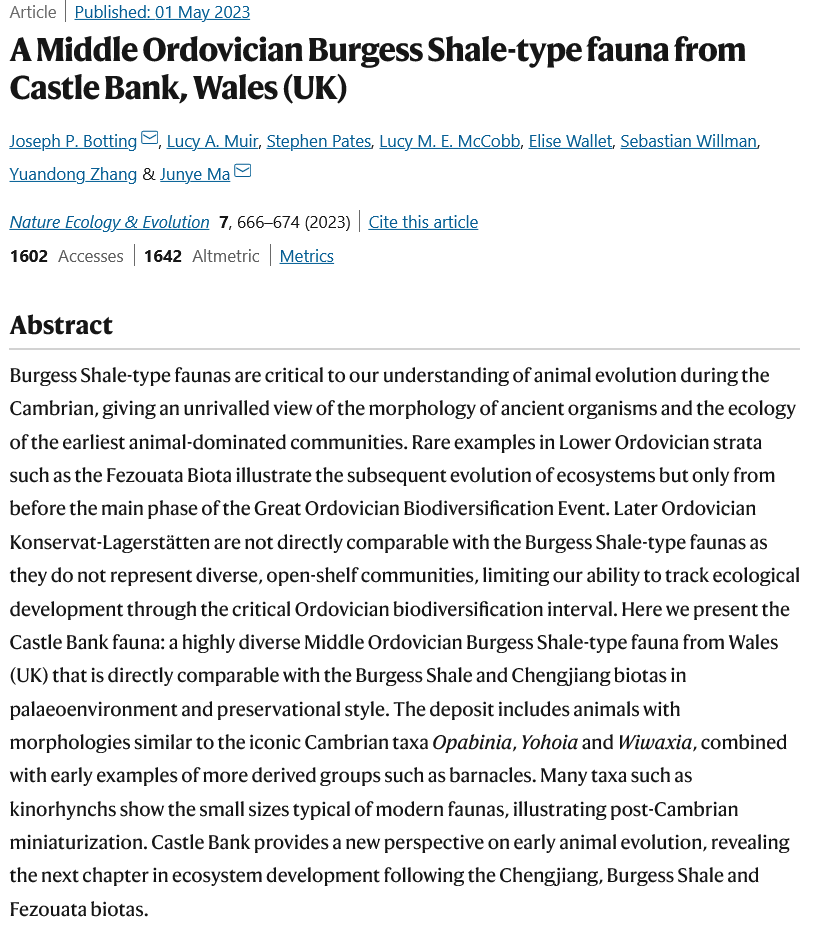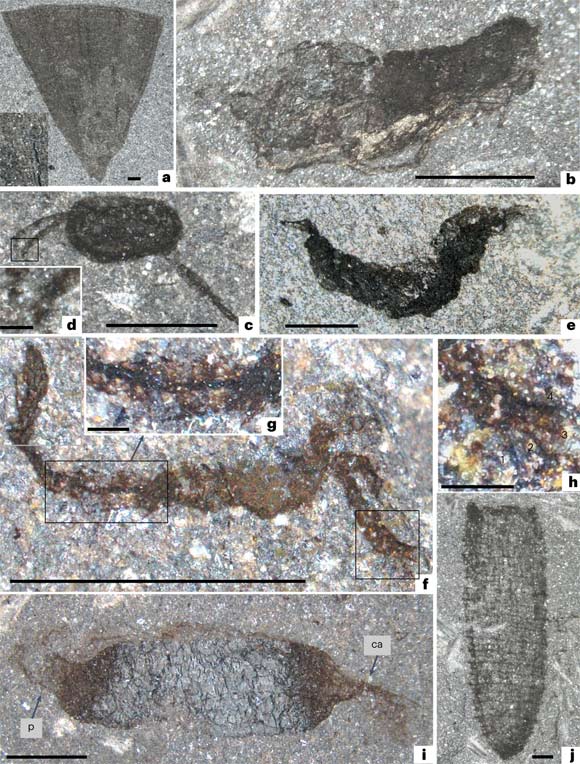Archaeologists discovered a marine archaeological site from the mid-Ordovician Period 462 million years ago Castle Bank, Wales, according to a new study published on Monday.
The site boasts 150 different fossilized species, many of which had never been discovered before this find.
A study published in the journal Nature Ecology & Evolution, details some of the unexpected fossil finds.
https://www.nature.com/articles/s41559-023-02038-4
The site is thought to be unique as the soft tissue and many complete organisms were preserved in good condition. In some of the specimens, nerves and digestive systems are still fully intact, which is extremely rare.
Many of the fossils are similar to Cambrian ones (485-542 million years ago). The newly discovered species include opabiniids, proto-arthropods with long noses, wiwaxiids, which are thought to be an early relative of mollusks that are armored with scales, a creature thought to be an early ancestor of goose barnacles and cephalocarid shrimps. Of the species discovered, most are considered very small, measuring 1-3mm.

Such exquisite detail is known from the best Cambrian faunas, but not previously from the Ordovician.
The range of fossils includes several unusual discoveries, from unexpectedly late examples of Cambrian animals looking like opabiniids (weird proto-arthropods with a long proboscis) and wiwaxiids (slug-like mollusks armored with scales), to tantalizing, unexpectedly early fossils that resemble modern goose barnacles, cephalocarid shrimps (which have no fossil record at all) and possibly even a marine relative of insects.
